
2D Design: Symposium Promotion
Revell Toronto Helsinki
Client
Symposium for the City of Toronto
Scope of Work
- Research
- Graphic Identity
- Invitations
- Exhibition Panels
- Symposium Program
- Bookmark
- Brochure
- Banners
Viljo Revell: Architect of Toronto City Hall
Viljo Revell's international breakthrough came with winning the 1956–58 architectural competition for the design of the Toronto City Hall, which he designed together with fellow Finnish architects Heikki Castrén, Bengt Lundsten, and Seppo Valjus. The building was completed in 1965, the year following Revell's premature death.
Its asymmetric curving towers and elegant public square signaled Toronto’s emergence as a modern metropolis. It still stands as a dramatic embrace of bold design. Both timeless and startling, its unique combination of organic and geometric forms influenced a generation of architects and city-builders.
Toronto’s civic leaders had been looking to build a more contemporary city hall to house its growing municipal government since at least 1943, when a report to city council recommended a new city hall with public square. However, initial design concepts were underwhelming. Classes at the University of Toronto Faculty of Architecture co-authored a letter condemning the proposal and calling for an international competition.
Led by Mayor Nathan Phillips the Toronto city council decided in 1956 to hold an international architectural competition. By the deadline of April 18, 1958, the committee received over 500 designs from 42 countries from which it selected eight semi-finalists. In September 1958, three judges selected Viljo Revell's design, though it almost missed the short list. Eero Saarinen as a member of the panel of five judges, arrived a day and half late and chose Revell's design from the other judges' list of rejects. He convinced two other judges on the panel that Revell's unique design should be the winner. The building was officially opened to the public on September 13, 1965.
The City of Toronto celebrated Revell’s 100th birthday, with a symposium and exhibition. We designed the newsletter, exhibition panels, and invitation to the Frank Gehry presentation in the council chamber.
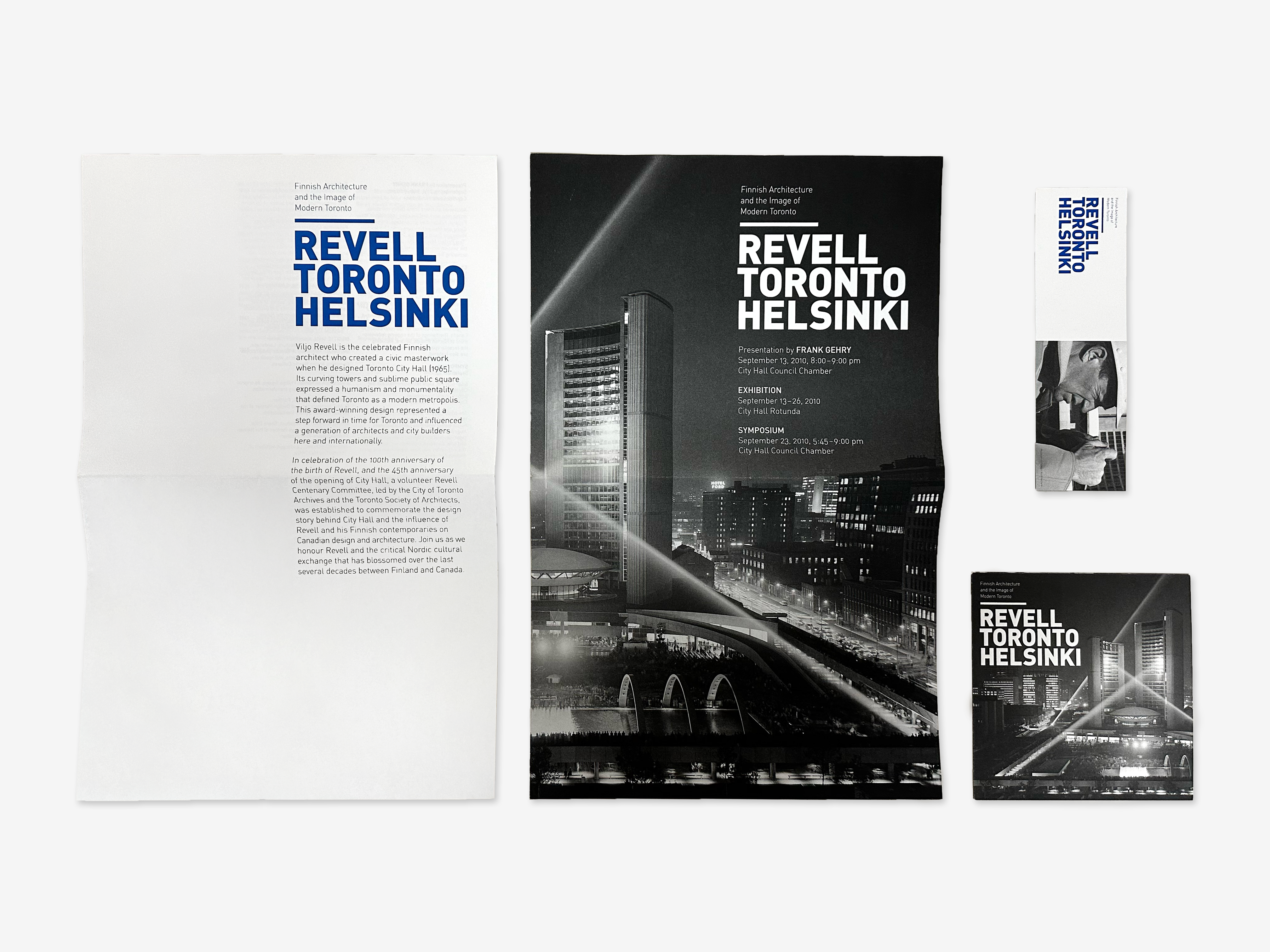

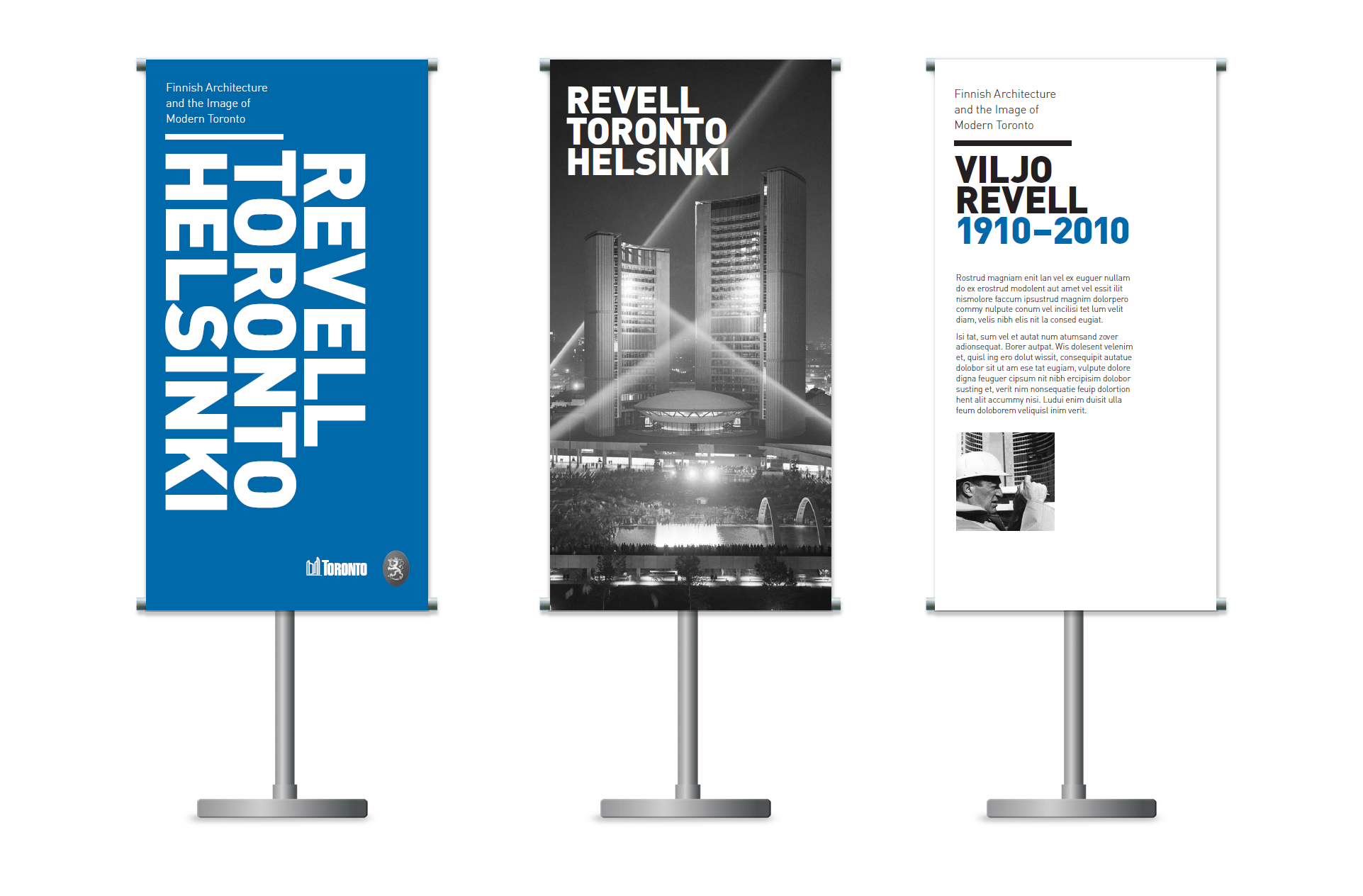
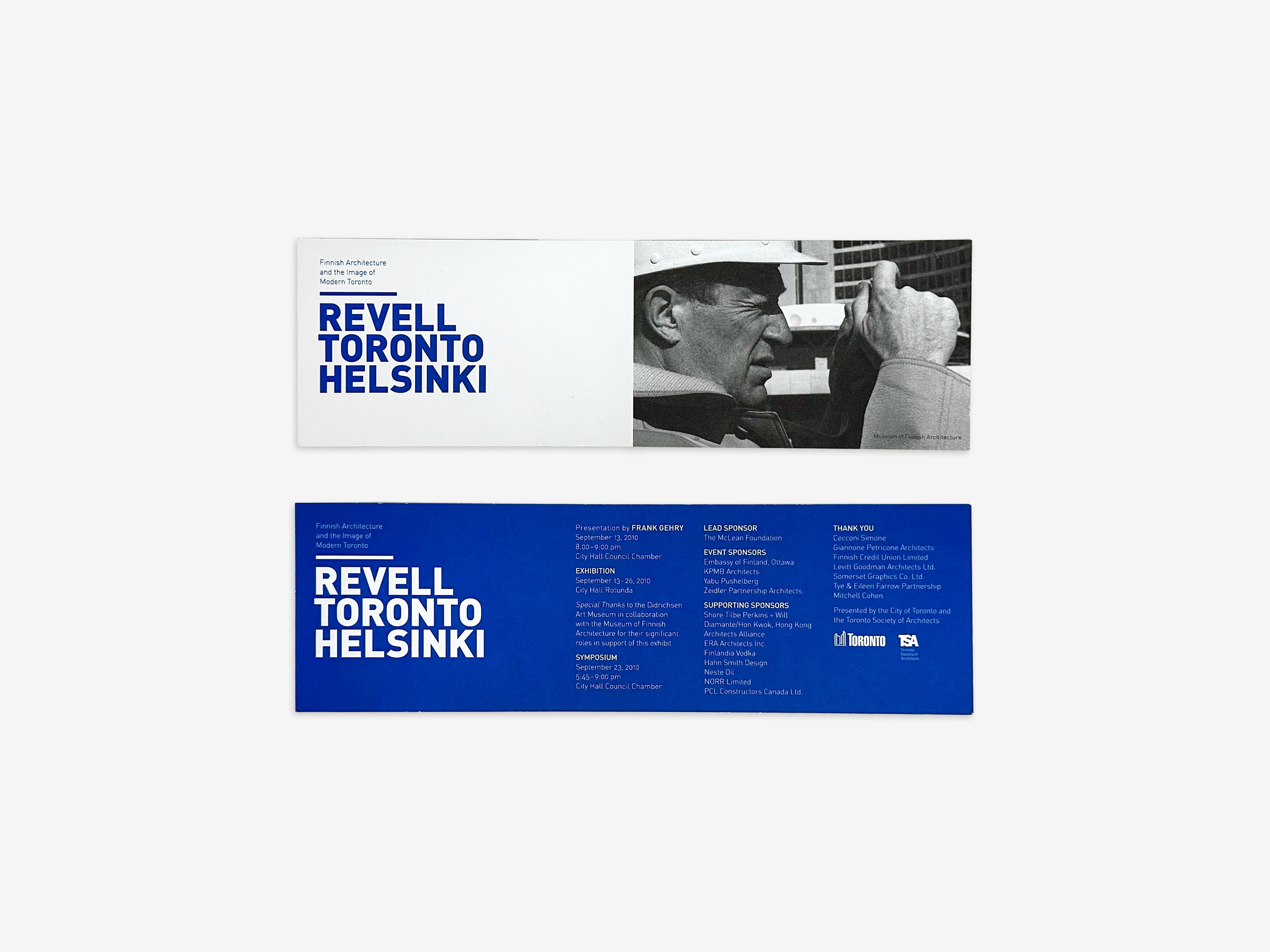
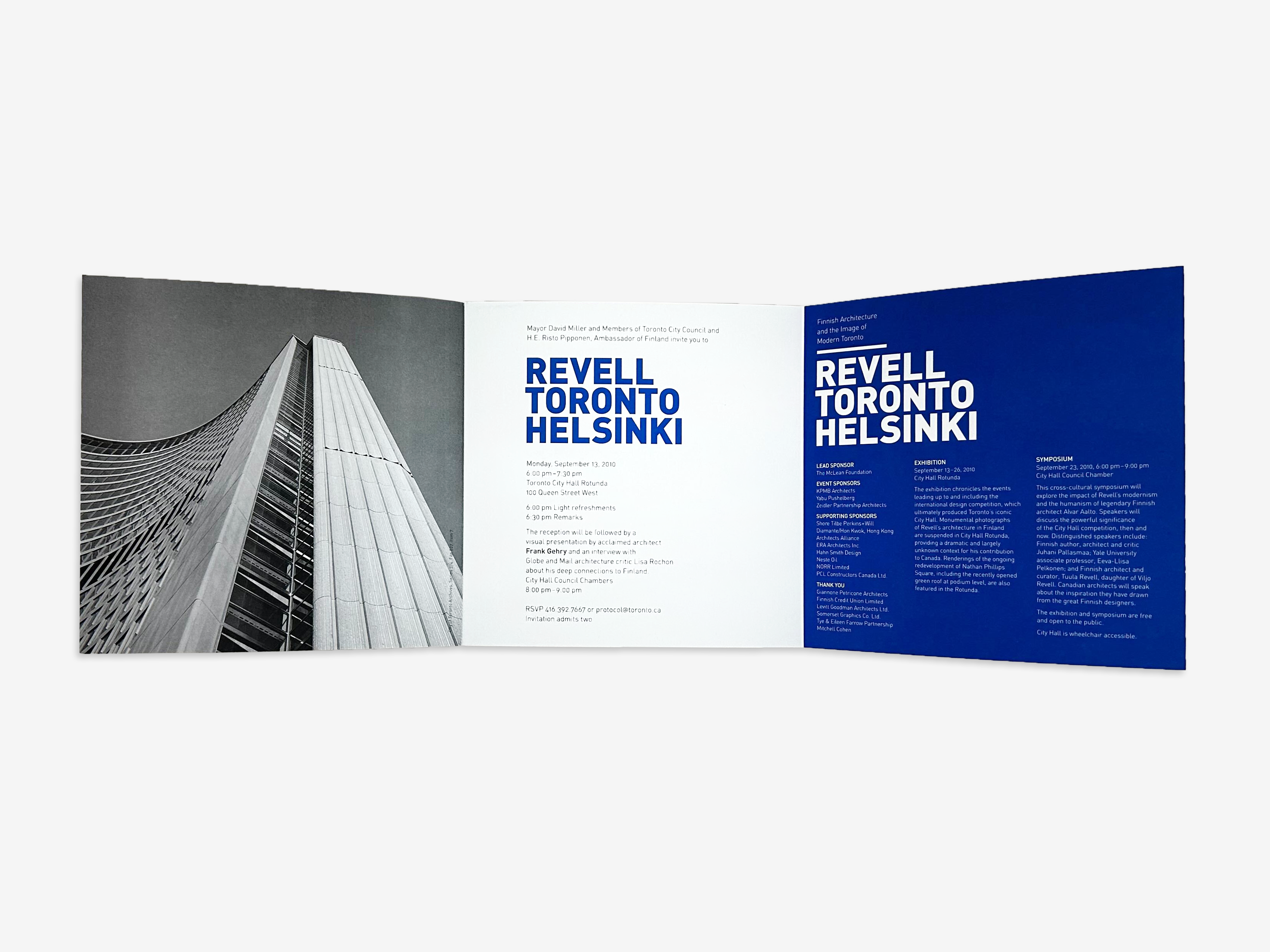
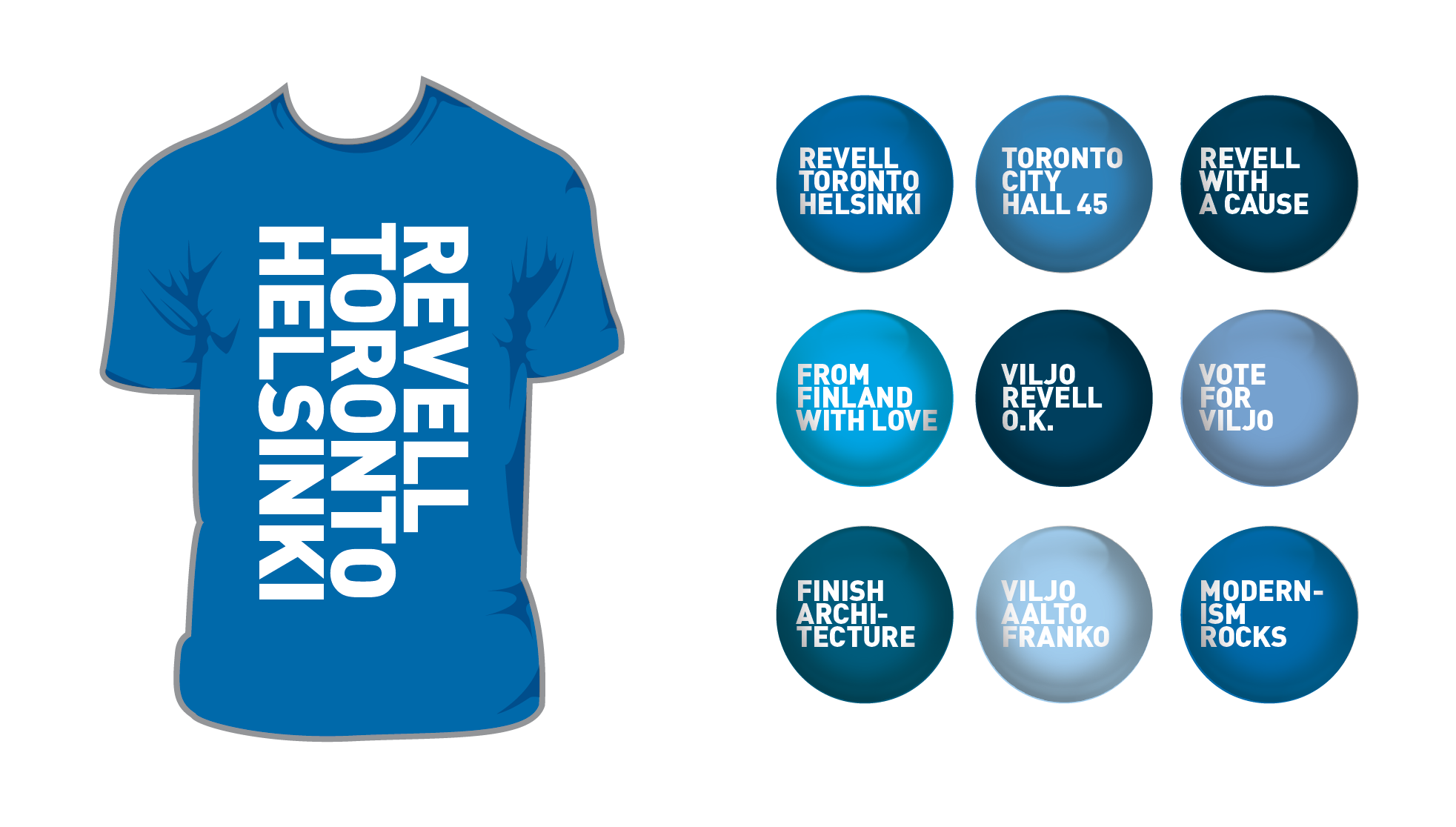

© KerrSmith Design 2023
